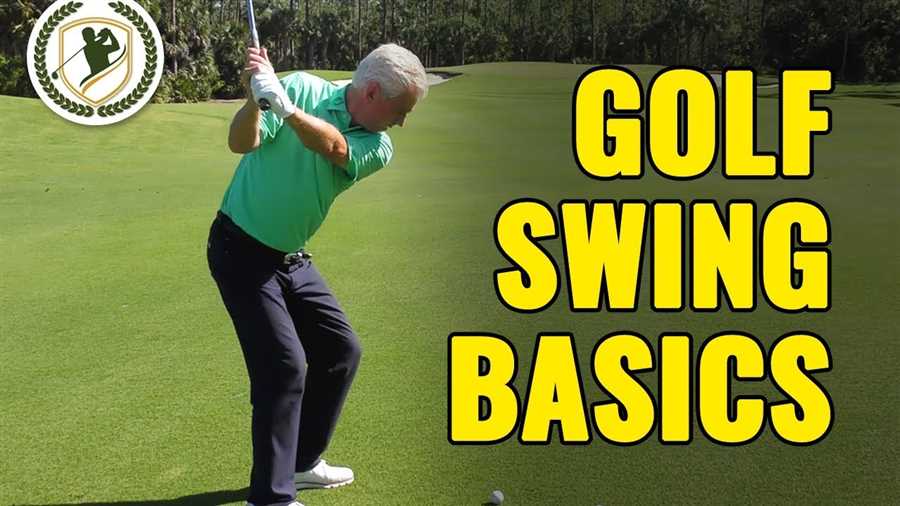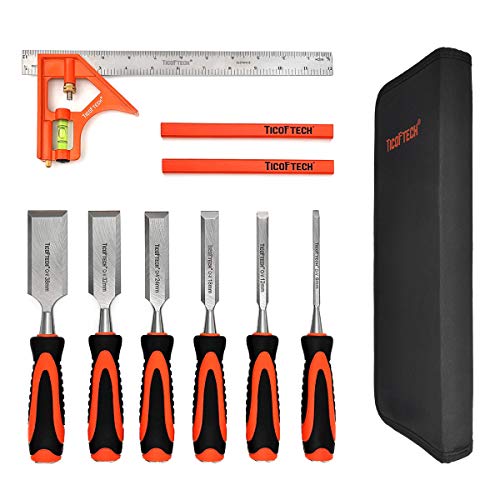Best beginner golf drills

Golf is a challenging sport that requires a combination of skill, technique, and precision. If you’re a beginner looking to improve your game, it’s important to start with the basics and gradually build your skills. One of the most effective ways to do this is through the practice of golf drills.
Golf drills are designed to help golfers of all levels enhance their swing, improve their aim, and develop better control over the ball. For beginners, these drills can provide a solid foundation for mastering the fundamentals of the game. By incorporating these drills into your practice routine, you can quickly progress and become a more confident golfer.
There are numerous golf drills that are ideal for beginners, focusing on different aspects of the game. Some drills are designed to improve your grip and stance, while others help you develop a more consistent swing. Additionally, there are drills that can help you improve your putting or chipping skills.
In this article, we will explore some of the best beginner golf drills that can help you build a strong foundation and improve your overall game. Whether you’re looking to improve your driving distance, accuracy, or short game, these drills will provide you with the necessary tools to take your golf skills to the next level.
Effective Drills for Beginning Golfers
For beginners looking to improve their golf game, incorporating a few key drills into their practice routine can help to develop fundamental skills and build a solid foundation for future success on the course. These drills focus on improving accuracy, distance, and overall technique, allowing beginners to progress quickly and gain confidence in their abilities.
1. Alignment Drill

A common struggle for many beginners is properly aligning their body with the target. This drill involves setting up a club parallel to the target line and placing another club on the ground to create a guide for the feet. By practicing aligning their feet, hips, and shoulders correctly, beginners can develop consistency and ensure their shots are heading in the desired direction.
2. Grip Pressure Drill
Having the proper grip is crucial for a successful swing. This drill involves gripping the club with the right amount of pressure, neither too tight nor too loose. Beginners should experiment with different grip pressures to find the balance that allows for control and clubhead speed. Practicing this drill regularly will help improve swing power and accuracy.
3. Tempo and Rhythm Drill
Developing a smooth and consistent swing tempo is essential for beginners to hit accurate shots. This drill focuses on maintaining a consistent rhythm by practicing a slow and controlled backswing and smoothly transitioning into the downswing. By focusing on tempo and rhythm, beginners can improve their timing and generate more power in their shots.
4. Weight Transfer Drill

Proper weight transfer is crucial for generating power and maintaining balance throughout the swing. This drill involves practicing shifting weight from the back foot to the front foot during the swing. By focusing on transferring weight smoothly and efficiently, beginners can improve their swing mechanics and increase the distance and accuracy of their shots.
By incorporating these effective drills into their practice routine, beginning golfers can quickly develop essential skills and lay a solid foundation for their journey in the sport. Practicing these drills regularly and focusing on technique will enable beginners to progress and improve their game. With time and dedication, beginners can become more confident and proficient golfers.
Grip and Stance Drills

Developing a proper grip and stance is essential for beginner golfers to establish a strong foundation in their game. These drills focus on improving grip and stance, which are fundamental aspects of a golfer’s swing.
One drill to enhance grip is the “Vardon Grip Drill.” In this drill, players hold the club with their lead hand and rotate their wrist to ensure that the “V” formed by the thumb and index finger points towards their trailing shoulder. This drill promotes a neutral grip, which enables better control and consistent striking of the ball.
Another important aspect of a golfer’s stance is their alignment. The “Alignment Stick Drill” helps beginners become aware of their posture and alignment. By placing alignment sticks or clubs on the ground parallel to the target line and perpendicular to their toes, golfers can ensure that their feet, hips, and shoulders are aligned correctly. This drill promotes proper body positioning, leading to improved accuracy and ball striking.
Additionally, the “Weight Distribution Drill” assists players in maintaining the correct balance and weight distribution throughout their swing. By practicing with a foot-to-foot balance, golfers can ensure that their weight is evenly distributed between their front and back leg. This drill helps beginners establish a stable base, enabling them to generate more power and control in their shots.
These grip and stance drills provide a solid foundation for beginners to develop their golf swing. By mastering these fundamental techniques, players can improve their overall performance and enjoy a more consistent and powerful game.
Swing Plane Drills
The swing plane is one of the most important aspects of a golf swing. It refers to the path that the club should ideally take during the swing. A proper swing plane allows for consistent ball striking and helps prevent slicing or hooking the ball. Practicing specific swing plane drills can help beginners develop a better understanding of the concept and improve their overall swing.
One effective drill to work on swing plane is the alignment stick drill. This drill involves placing an alignment stick or a golf club along the target line, parallel to the feet. The player then makes practice swings, trying to keep the club or the hands in line with the stick throughout the swing. This helps promote a straighter swing path and a more on-plane position.
Another drill that can help with swing plane is the towel under the arms drill. For this drill, the golfer tucks a towel under both arms, keeping them pressed against the body throughout the swing. This helps to keep the arms in sync with the body and encourages a more connected swing. It also helps prevent the arms from flying away from the body, which can result in an off-plane swing.
Improving swing plane is a key component of a solid golf swing. By practicing swing plane drills such as the alignment stick drill and the towel under the arms drill, beginners can develop a better understanding of this concept and work towards a more consistent and accurate swing.
Tempo and Timing Drills
Golf is a game that requires precise timing and tempo in order to achieve consistent results. Whether you are a beginner or an experienced player looking to improve your game, incorporating tempo and timing drills into your practice routine can help you develop a more consistent swing.
One effective drill for improving tempo and timing is the “One-Handed Drill.” This drill involves taking your non-dominant hand off the club and swinging with just one hand. This helps to develop a sense of rhythm and timing in your swing, as well as improve your balance and coordination. Start with short swings and gradually work your way up to a full swing. Focus on maintaining a smooth, controlled motion throughout the entire swing.
Another helpful drill is the “Metronome Drill.” This drill involves using a metronome, or a smartphone app with a metronome feature, to set a consistent rhythm for your swing. Start by swinging the club back and forth in time with the metronome’s beat, gradually increasing the speed as you become more comfortable. This drill helps to train your body to stay in sync with the rhythm of your swing, improving your timing and tempo.
In addition to these drills, it’s important to practice your tempo and timing on the course as well. When playing a round, focus on maintaining a consistent rhythm and tempo throughout each shot. Take your time and make sure to complete your pre-shot routine before each swing to help establish a consistent tempo.
By incorporating tempo and timing drills into your practice routine and focusing on maintaining a consistent rhythm and tempo on the course, you can improve your overall game and become a more consistent player. Remember to start with smaller swings and gradually increase the difficulty as you become more comfortable. With time and practice, you’ll develop a smoother, more controlled swing that leads to better results on the course.
Weight Shift Drills
Developing a proper weight shift is crucial for a good golf swing. It helps generate power and consistency in your shots. Here are some effective weight shift drills to improve your game:
- Step Drill: Start by practicing your weight shift by taking small steps forward during your swing. Focus on shifting your weight from your back foot to your front foot as you take your step. This drill helps develop the coordination and balance needed for a smooth weight transfer.
- Bucket Drill: Place an empty bucket or water bottle next to your lead foot. During your swing, focus on bumping the bucket or knocking over the water bottle with your lead knee. This drill helps train your body to initiate the weight shift from your lower body.
- Stability Ball Drill: Stand on a stability ball with your feet shoulder-width apart. As you swing, try to maintain your balance on the ball and shift your weight from one foot to the other. This drill improves your core stability and helps develop a solid weight shift.
- Alignment Stick Drill: Place an alignment stick or club on the ground parallel to your target line. Start your swing with your weight evenly distributed between your feet, then focus on shifting your weight towards your target as you rotate your body. This drill helps promote a more dynamic weight shift.
By incorporating these weight shift drills into your practice routine, you can improve your ability to shift your weight effectively and consistently, leading to a more powerful and accurate golf swing.
5 Best beginner golf drills
Features
| Is Adult Product | |
| Release Date | 2023-04-14T00:00:01Z |
| Language | English |
| Number Of Pages | 32 |
| Publication Date | 2023-04-14T00:00:01Z |
Features
| Is Adult Product | |
| Release Date | 2023-06-12T00:00:01Z |
| Language | English |
| Number Of Pages | 144 |
| Publication Date | 2023-06-12T00:00:01Z |
Features
| Part Number | 9798887680132 |
| Is Adult Product | |
| Release Date | 2022-11-17T00:00:01Z |
| Language | English |
| Number Of Pages | 104 |
| Publication Date | 2022-11-17T00:00:01Z |
Features
| Release Date | 2019-11-07T00:00:01Z |
| Language | English |
| Number Of Pages | 352 |
| Publication Date | 2019-11-07T00:00:01Z |
Features
| Part Number | DEBK48-1009-249 |
| Is Adult Product | |
| Release Date | 2022-06-17T00:00:01Z |
| Language | English |
| Number Of Pages | 422 |
| Publication Date | 2022-06-17T00:00:01Z |
Question-answer:,
What are weight shift drills?
Weight shift drills are exercises that help golfers shift their weight properly during the golf swing. They involve practicing shifting the weight from the back foot to the front foot in a controlled and coordinated manner.
Why is weight shift important in golf?
Weight shift is important in golf because it helps generate power and consistency in the golf swing. By shifting the weight from the back foot to the front foot, golfers can create a more efficient transfer of energy, resulting in increased clubhead speed and improved ball striking.
What are some common weight shift drills?
Some common weight shift drills in golf include the “step drill,” where golfers take small steps forward as they swing, and the “hip bump drill,” where golfers focus on shifting their hips laterally towards the target during the downswing. Other drills involve swinging with a weighted club or using a balance board to improve stability and weight transfer.
How often should I practice weight shift drills?
The frequency of practicing weight shift drills depends on the individual’s goals and availability. Ideally, golfers should incorporate weight shift drills into their regular practice routine, aiming to perform them at least a few times a week. Consistent practice will help develop muscle memory and improve the ability to shift weight effectively during the swing.
Can weight shift drills help improve distance in golf?
Yes, weight shift drills can help improve distance in golf. By learning to transfer weight properly and generate more power from the ground up, golfers can increase their clubhead speed, resulting in longer shots. Additionally, improved weight shift can also lead to better timing and sequencing in the swing, further enhancing distance and overall performance.
What are weight shift drills?
Weight shift drills are exercises designed to help improve the golfer’s ability to shift their weight properly during the golf swing. These drills focus on shifting the body’s weight from the back foot to the front foot during different phases of the swing.
Conclusion
In conclusion, weight shift drills are an essential part of any golfer’s practice routine. By focusing on shifting their weight properly during the golf swing, players can greatly improve their accuracy and power. These drills help golfers develop a better sense of balance and coordination, while also improving their overall technique. Whether a beginner or a seasoned golfer, incorporating weight shift drills into one’s practice routine can lead to significant improvements on the course. So, grab your golf clubs and start working on your weight shift today!











